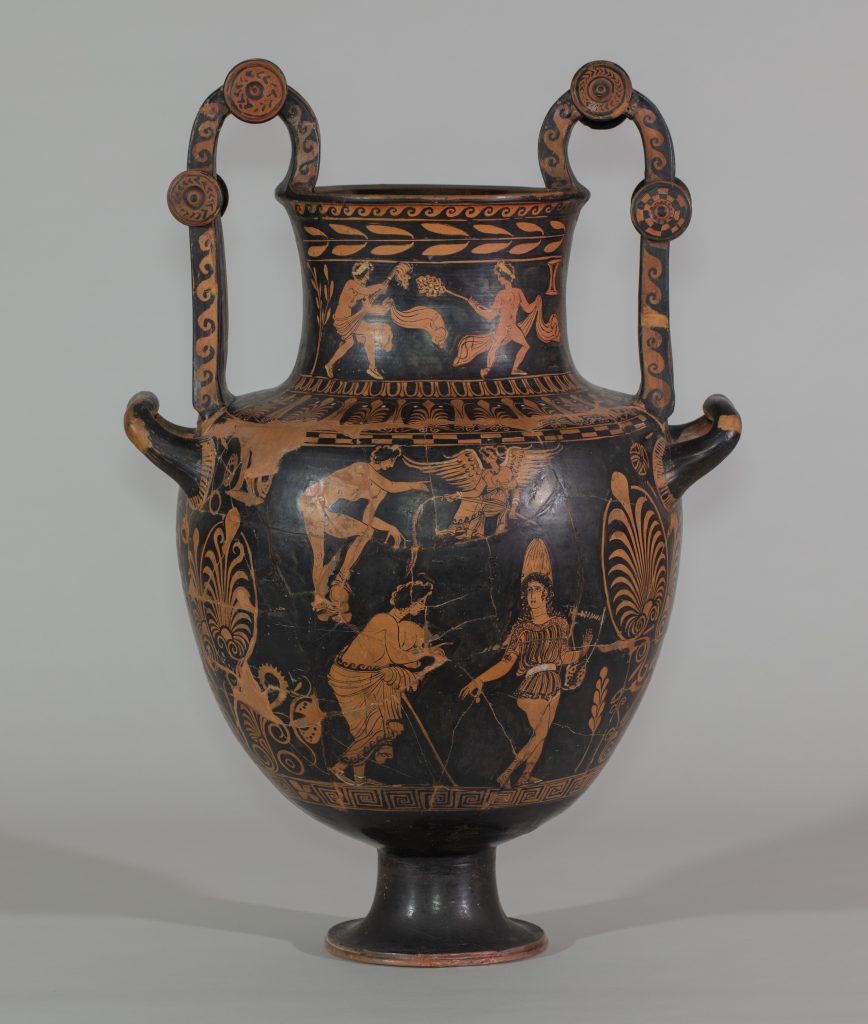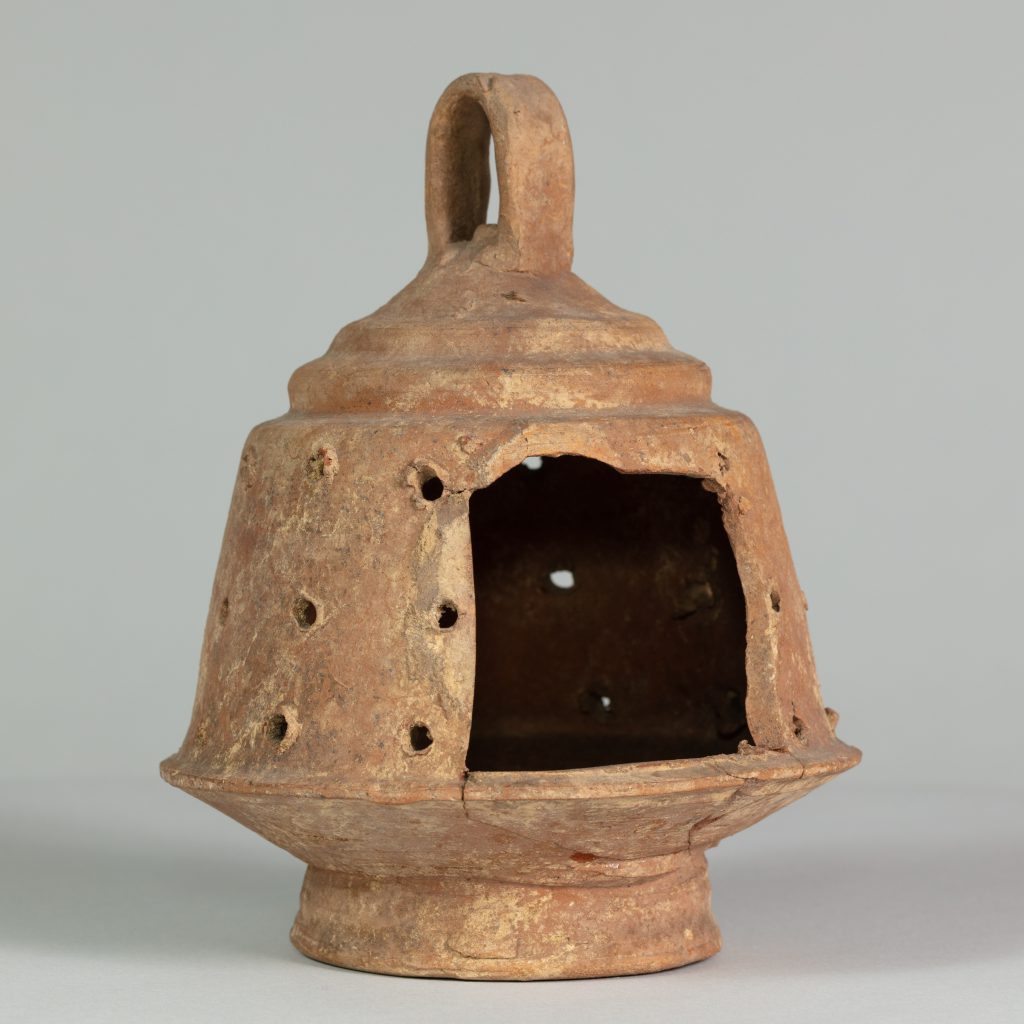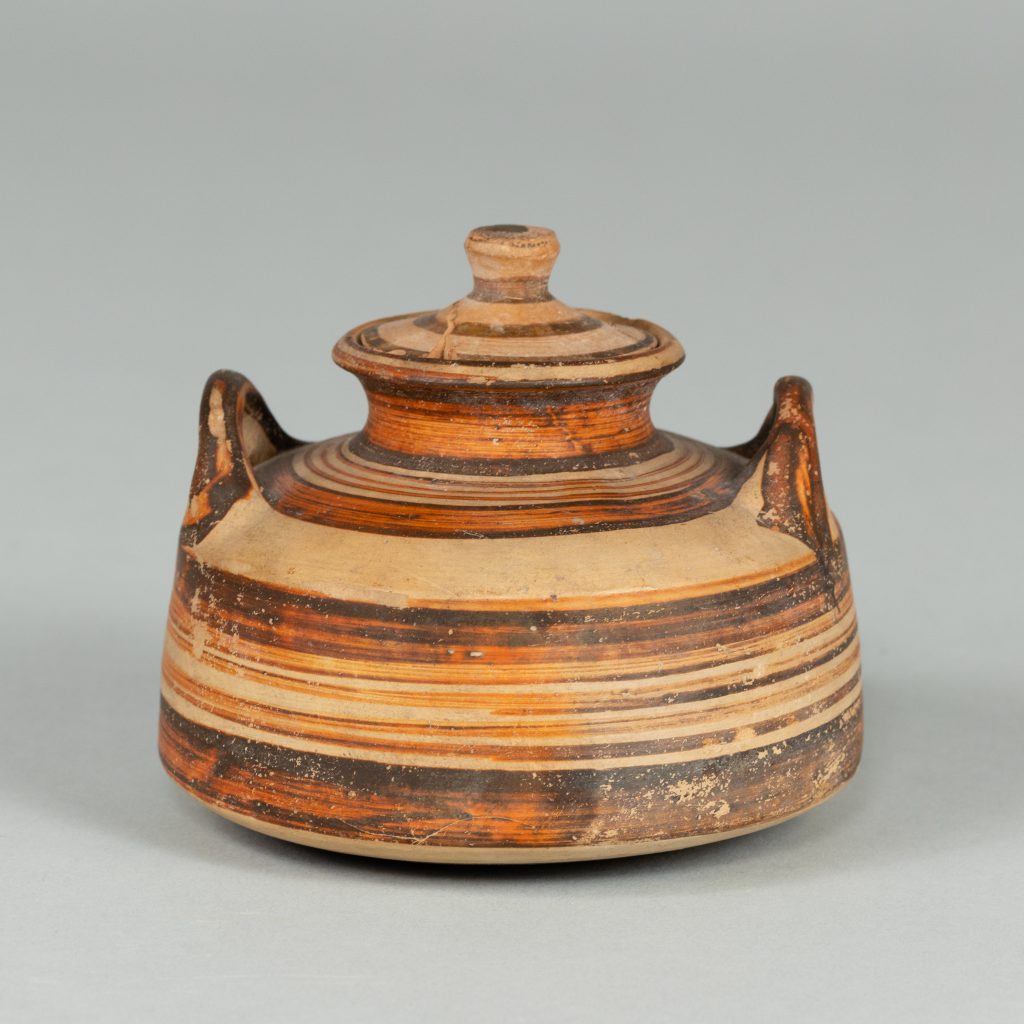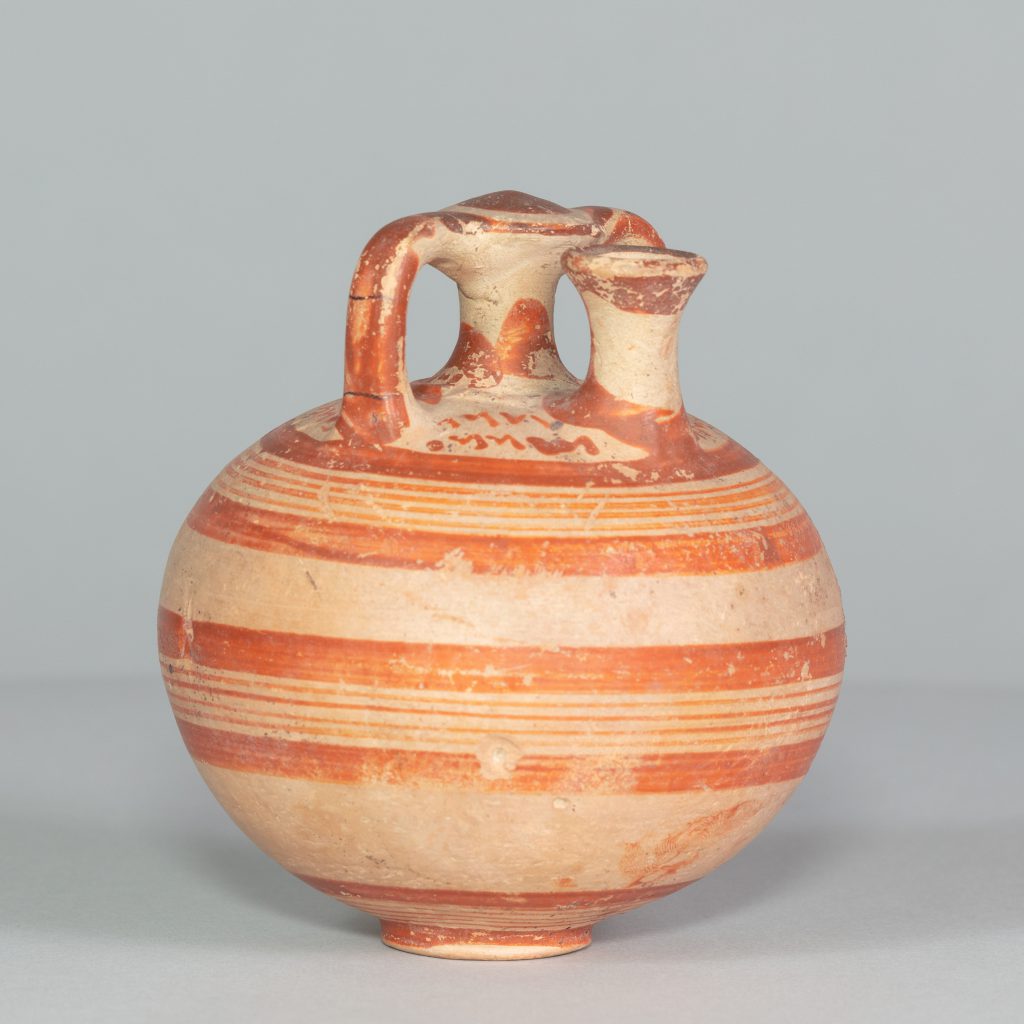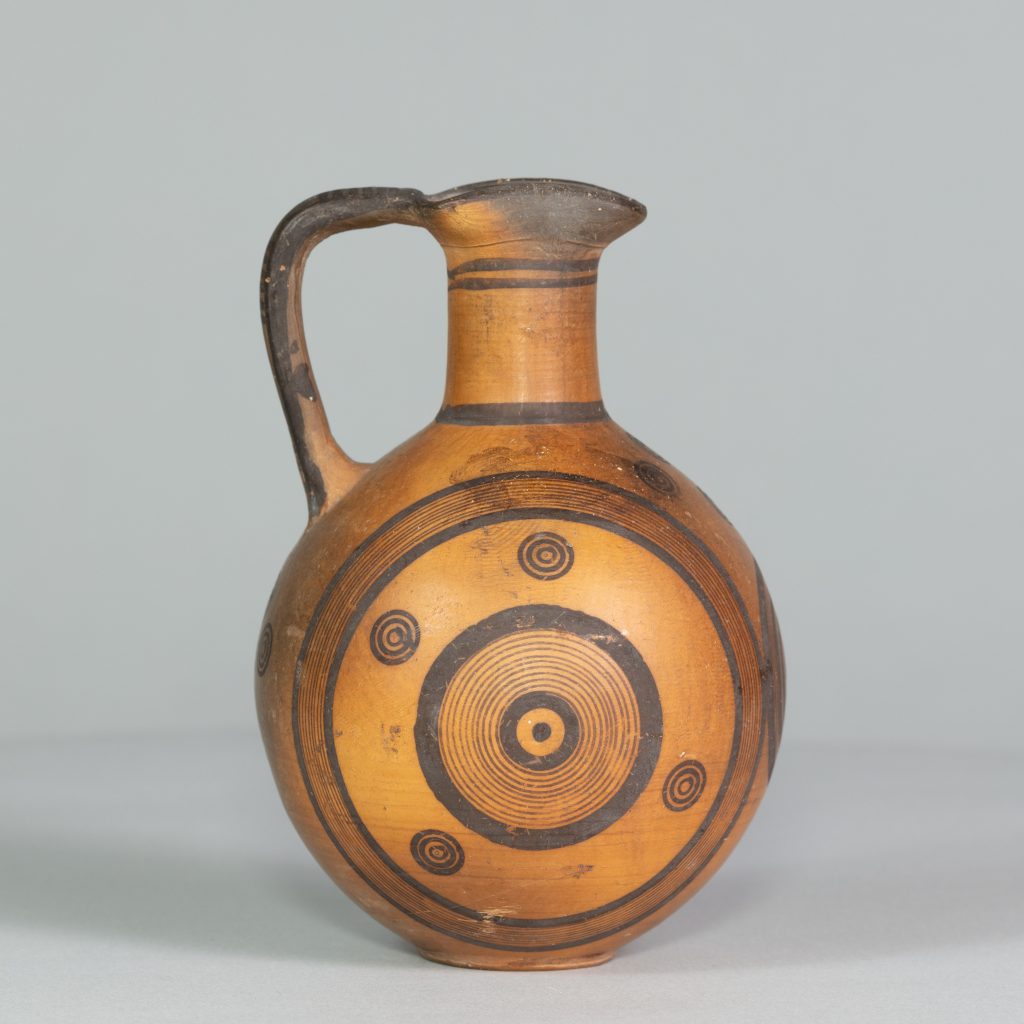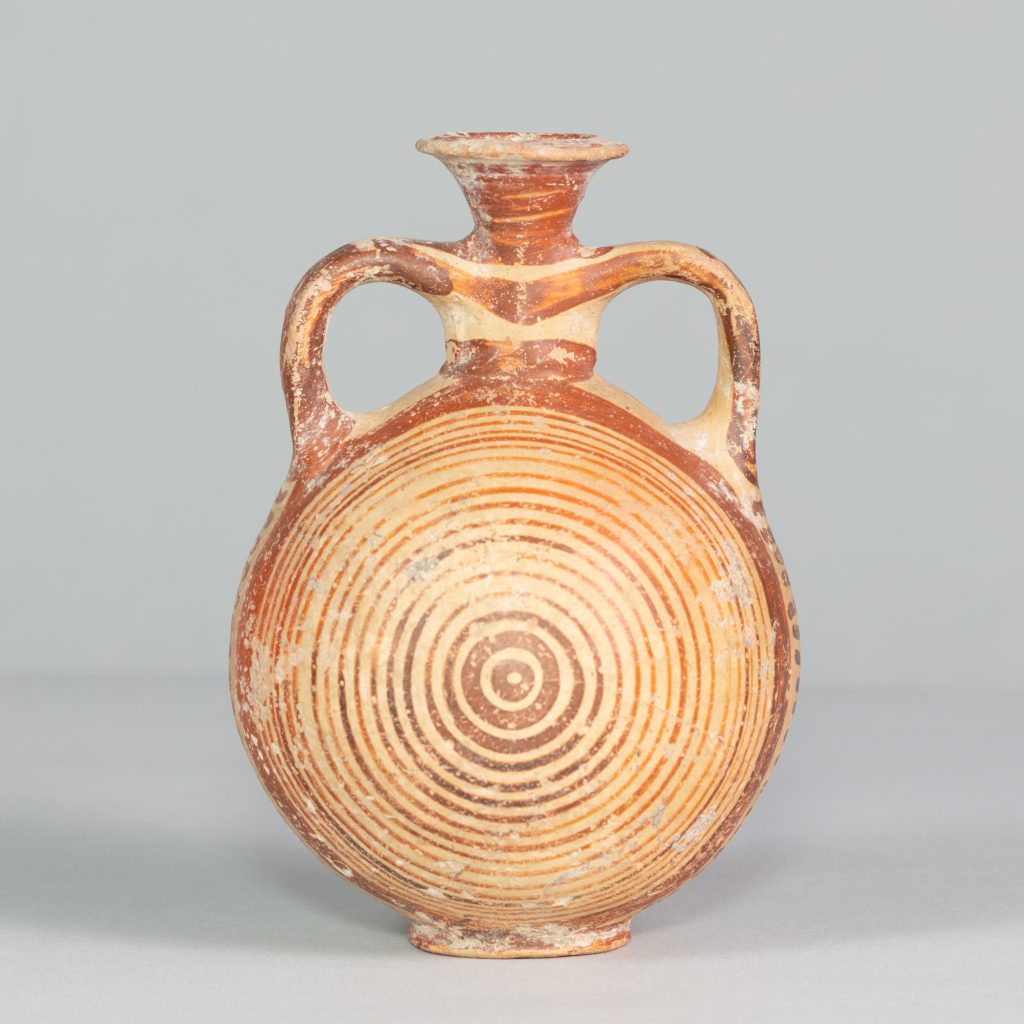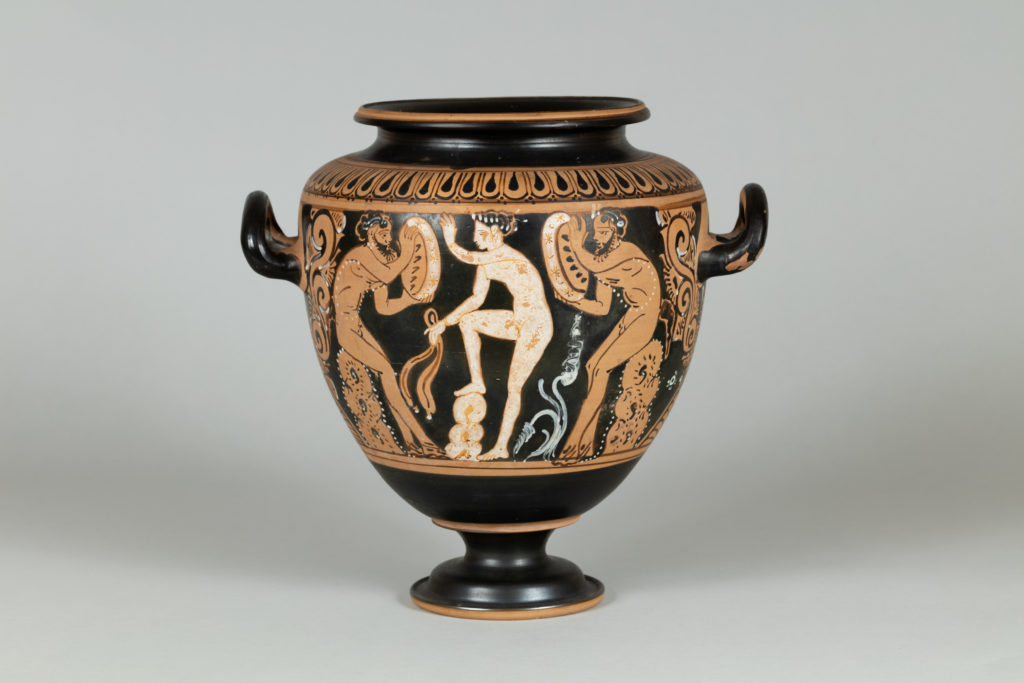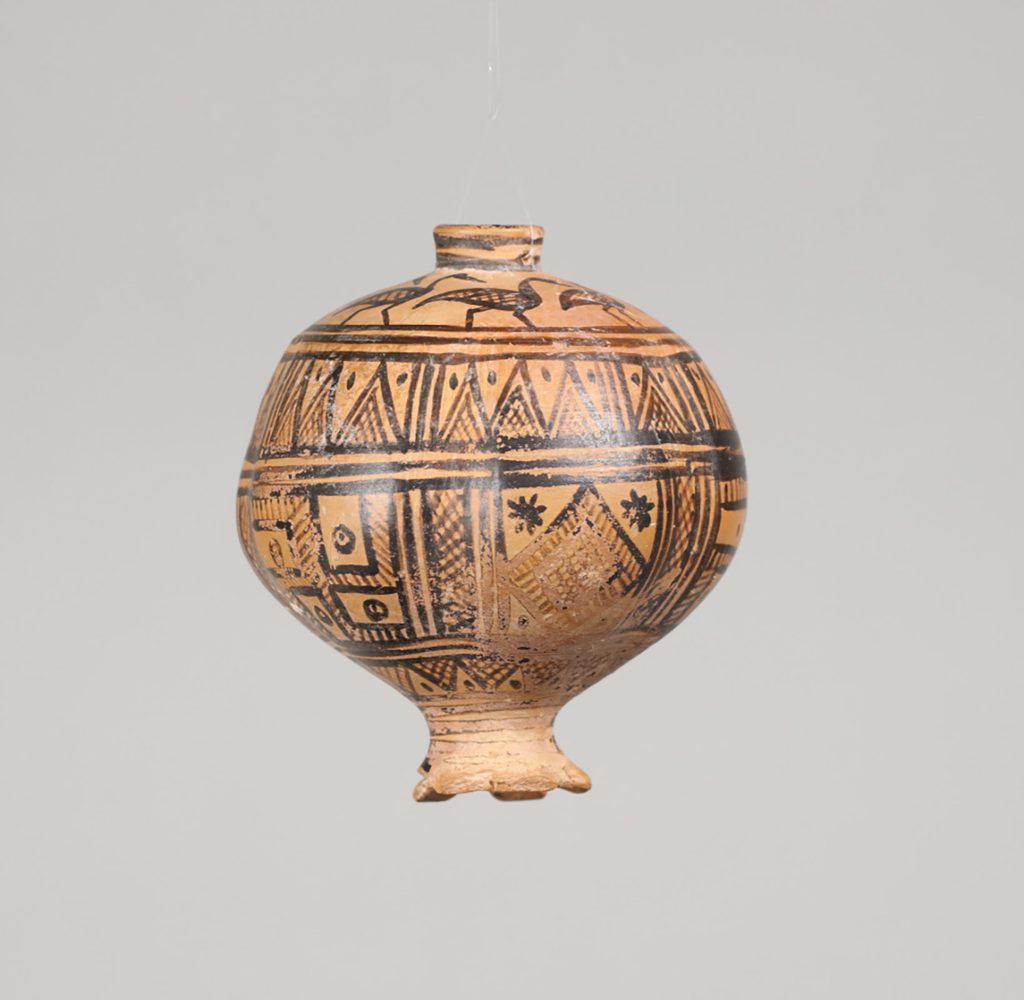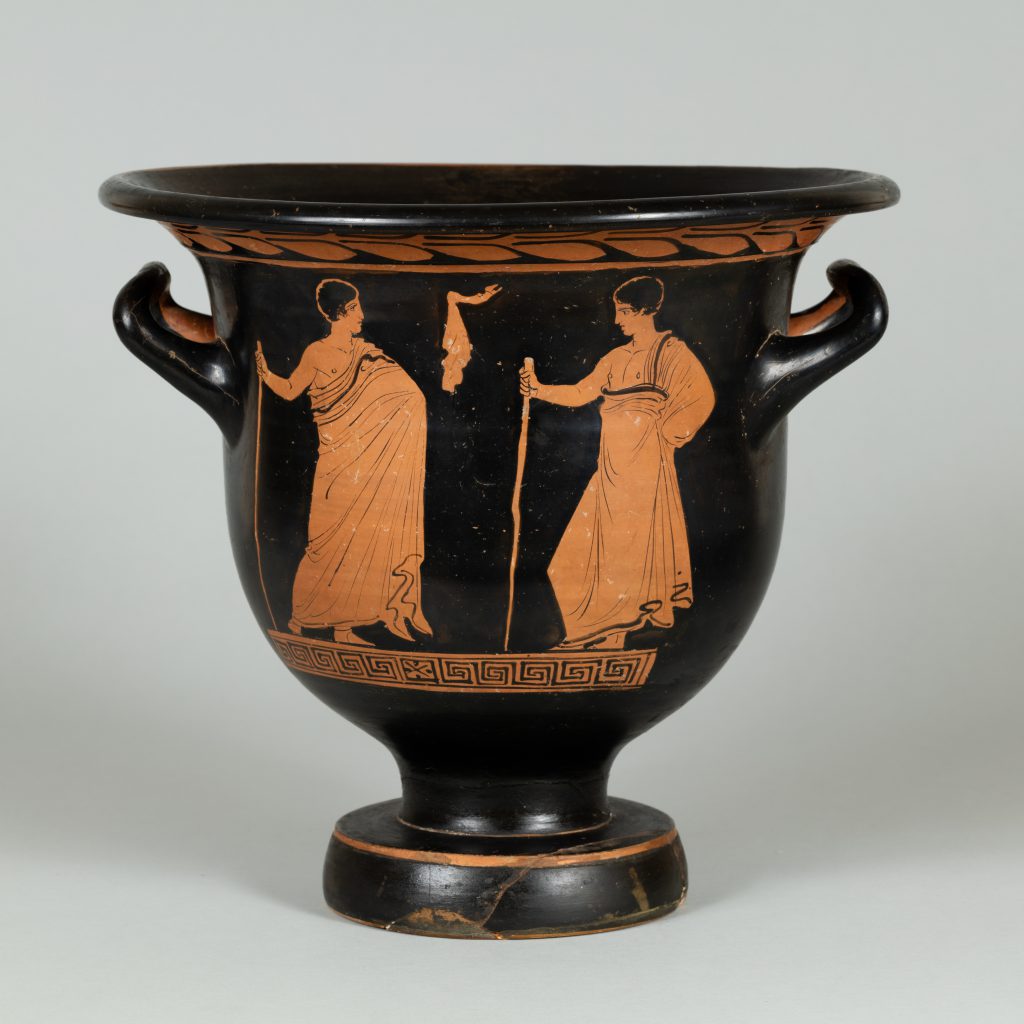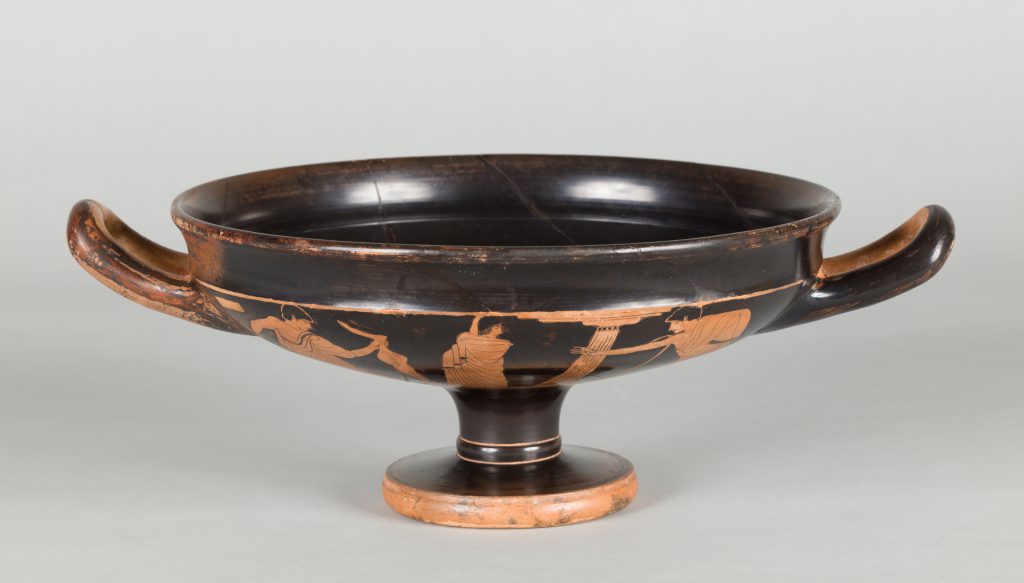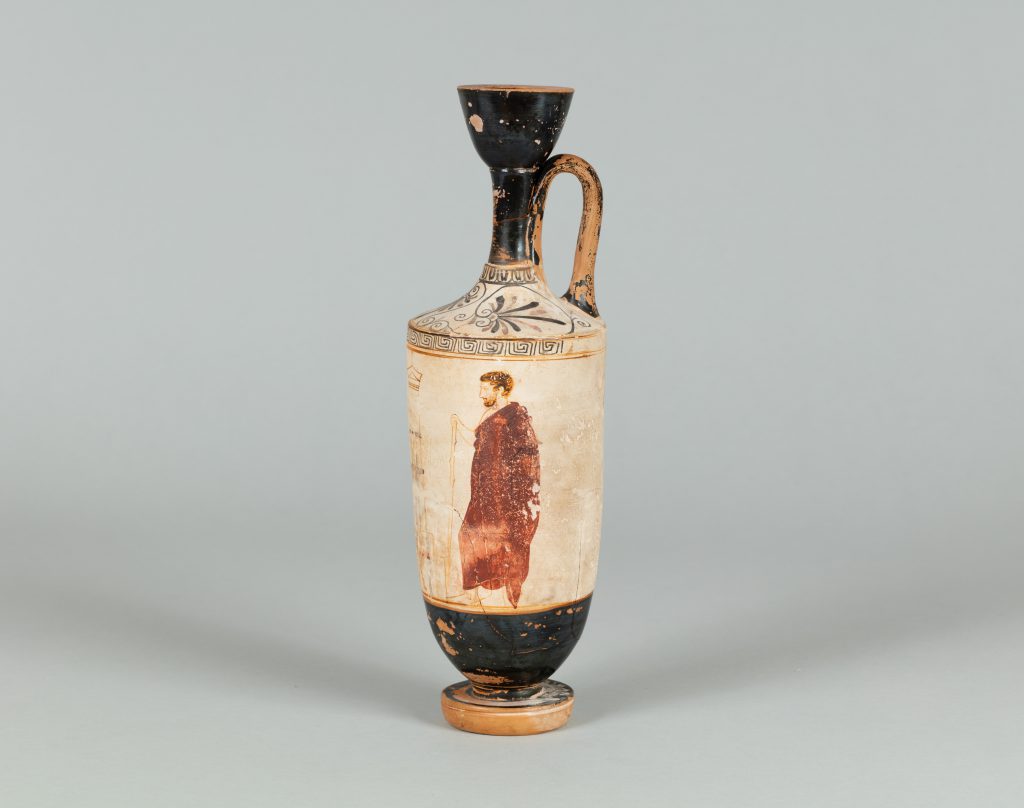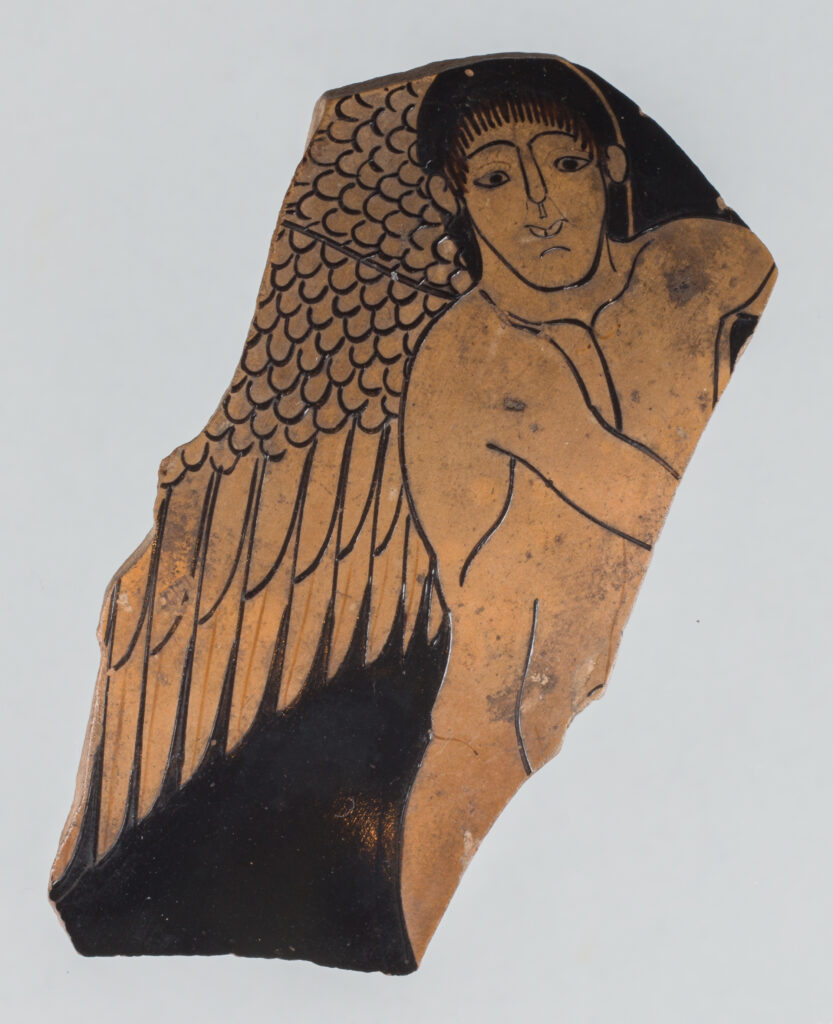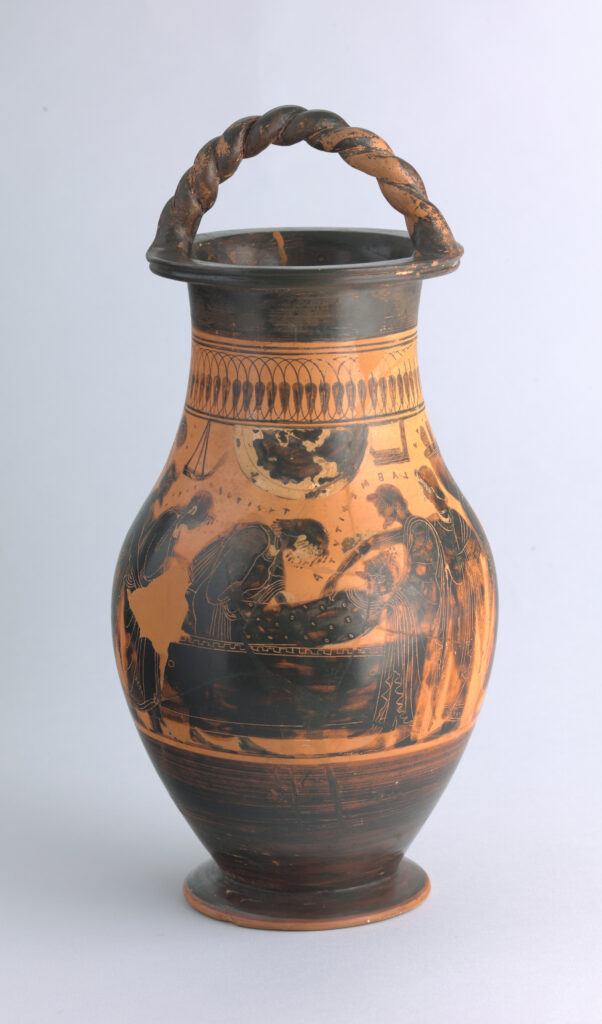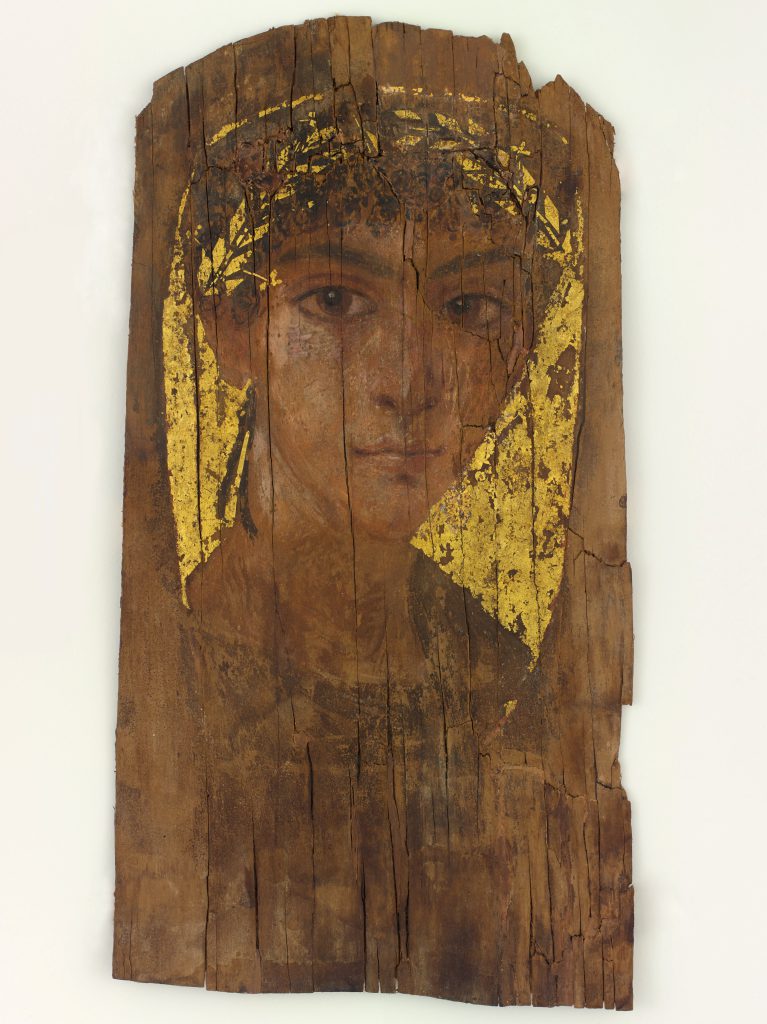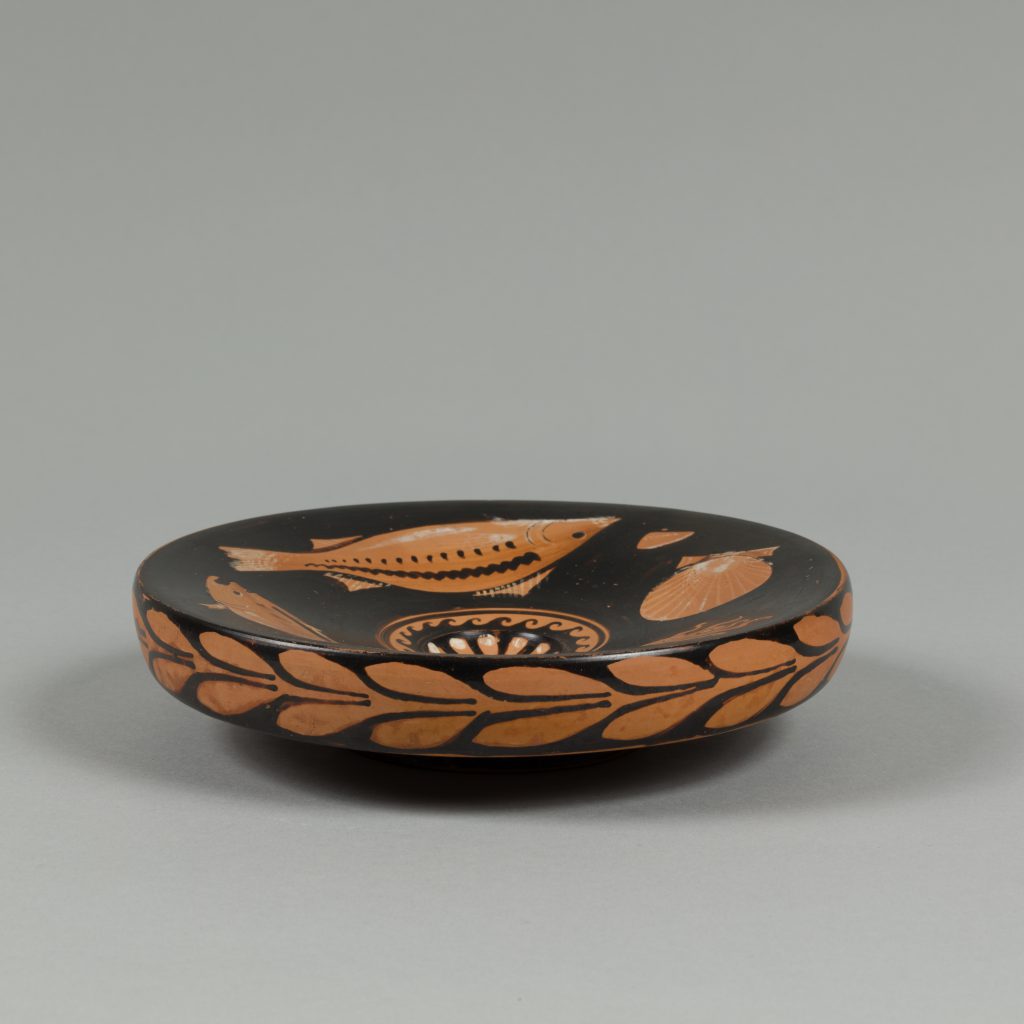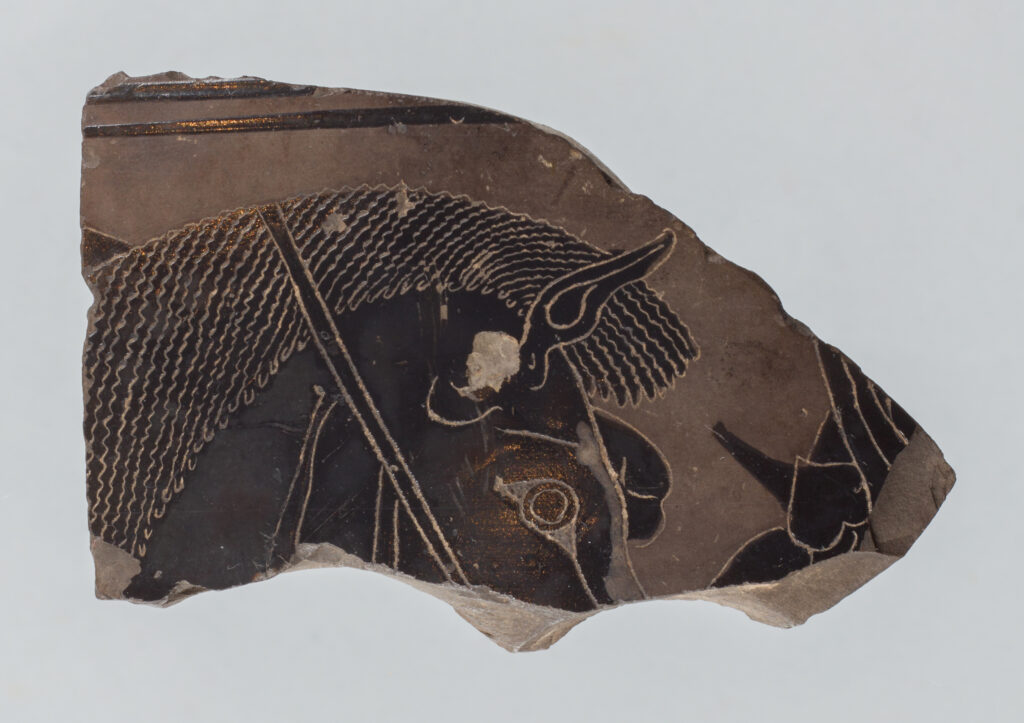

Gift of Edward Perry Warren, Esq., Honorary Degree 1926
1930.36Given its charred and fragmentary nature, this vase fragment might appear rather unassuming, but its history suggests otherwise: this fragment is one of two in the collection believed to have been burned during the Persian sack of Athens in 430 BCE. By speaking to historical events as well as demonstrating the exceptional degree of artistic skill in Greek vase painting, fragments like these suggests Edward Perry Warren’s commitment to supplying students with opportunities to intimately engage with the ancient Mediterranean past.
This black-figure krater (vase) fragment with horse head was donated to the BCMA in 1930 along with the red-figure skyphos fragment with flying eros, forming a complementary pair. The latter fragment definitively derives its discoloration from the Persian sack as it joins with an Acropolis wing fragment housed at the National Archaeological Museum, Athens. Consequently, these two fragments provide Bowdoin students with the hands-on opportunity to interact with complex pieces that visually illustrate the many ways objects can work to expand our understanding of the past by revealing the significant extent to which the Persians targeted Greek culture and destroyed Athens.
They also serve as prime, representative examples of the Greek tradition of black-figure vases, giving way shortly thereafter to red-figure painting. This is especially pertinent to the black-figure krater fragment with horse head, which has been attributed to the hand of Exekias, a painter of particularly noteworthy skill. He excels in his portrayals of horses, which are characterized by his specific treatment of the mane with its softly undulating parallel lines and the geometric nature of the eye.
Recognizing the educational value of such terracotta vase fragments as objects representative of the ancient Mediterranean past, Warren donated close to forty of them to further enhance the study of almost seventy complete terracotta vessels. Given that Warren donated fragments to the Museum throughout his lifetime, the fact that these two shards entered the collection as bequeaths suggests they may have been objects of particular importance to him as he deliberately kept them in his private collection.
Before 1930, collection of Edward Perry Warren; 1930, bequeathed to the Bowdoin College Museum of Art by Edward Perry Warren.
Collector
A testament to his impact as an influential twentieth-century American antiquities collector, Edward Perry Warren’s (1860–1928, H ’26) name is linked to hundreds of ancient objects housed in institutions across the United States, including more than five hundred works at the Bowdoin College Museum of Art alone.




